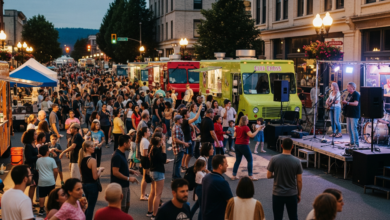Cost of Living in Melbourne Top 10 Suburbs

Cost of Living in Melbourne: What It Takes to Live in the Most Liveable Suburbs
Melbourne consistently ranks as one of the most liveable cities in the world, but how much does it really cost to live in Melbourne’s most liveable suburbs? Whether you’re planning to move, invest, or simply curious, understanding property prices, rent, and daily expenses is crucial. Let’s break down the cost of living in Melbourne’s best suburbs to help you make an informed decision.
Cost of Living in Melbourne’s Most Liveable Suburbs: Why These Areas Stand Out
Melbourne’s most desirable suburbs aren’t just expensive because of location—they offer a lifestyle that’s second to none. The expenses in Melbourne’s high-end suburbs are justified by the exceptional amenities and superior quality of life they offer, including:
- Top-rated public transport – Seamless access to Melbourne’s tram and train networks.
- Vibrant dining and entertainment – From hipster cafés in Fitzroy to waterfront dining in St Kilda.
- Parks and recreation spaces – Expansive green areas like the Yarra River Parklands.
- Access to top schools and hospitals – Close to institutions like Melbourne Grammar and The Alfred Hospital.
Cost of Living in Melbourne: Housing Prices and Rent in Top Suburbs
Melbourne’s property market remains highly competitive, with premium suburbs seeing consistent demand. If you’re looking to buy or rent, here’s what you can expect:
Cost of Living in Melbourne: Home Prices & Rentals
- Houses: Prices in sought-after suburbs like South Yarra and Toorak range from $1.2M to $3M+. Check Melbourne’s property market trends.
- Apartments: A modern unit in areas like Richmond or Carlton starts at $600K upwards. See Melbourne apartment listings.
- Rental Costs: A two-bedroom apartment typically costs $550–$850 per week.
Internal Tip: Looking for more budget-friendly options? Check out our guide to affordable Melbourne suburbs.
Cost of Living in Melbourne: Everyday Expenses
- Groceries & Dining: A weekly grocery bill ranges from $100–$150, while dining out at Melbourne’s best restaurants can cost $20–$50 per meal.
- Utilities & Internet: Monthly expenses for electricity, water, and NBN plans typically range from $200–$300.
- Transport & Parking: Public transport fares start at $4.60 per trip, per MYKI fare updates.
Is the Cost of Living in Melbourne’s Best Suburbs Worth It?
While the cost of living in Melbourne is high, the benefits of living in a top-rated suburb often outweigh the expenses. Premium locations offer high property values, top-tier schools, and superior lifestyle amenities, making them an attractive choice for buyers and renters alike.
Before making your decision, consider:
- Stay updated on Melbourne’s property market trends to track recent price fluctuations and identify the best time to buy or rent.
- Factor in local council fees and property taxes, as these additional costs can impact your overall budget.
- Plan your daily commute efficiently by checking public transport routes and schedules to ensure seamless connectivity in your chosen suburb.
Internal Tip: Moving soon? Check out our Melbourne Relocation Guide for expert tips!
Final Takeaway
Melbourne’s top suburbs come with a premium price, but they offer an unbeatable lifestyle. Whether you’re looking to buy, rent, or invest, knowing the cost of living in Melbourne’s best suburbs will help you plan wisely. Read More
Would you consider moving to one of these top suburbs? Share your thoughts in the comments!







